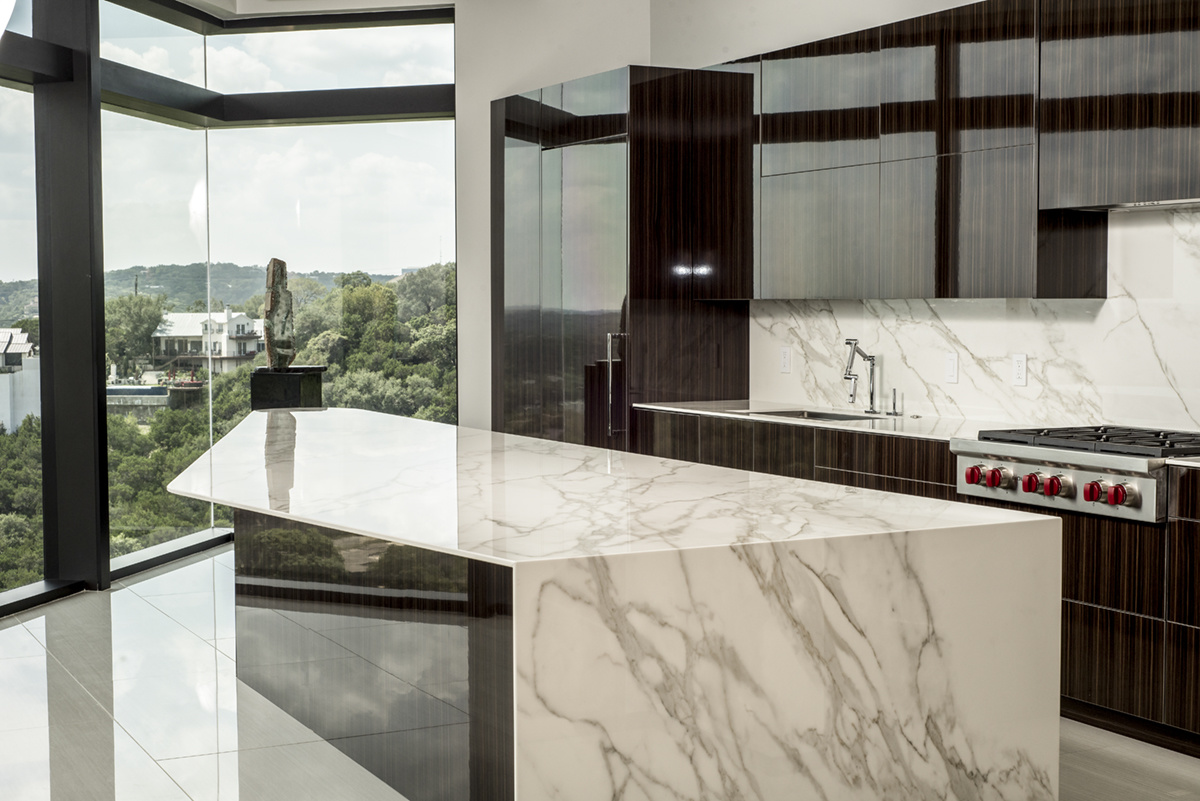When photographing commercial interior images, a common issue is an unsightly glare on reflective surfaces. Removing these reflections by compositing image layers significantly improves your images, separating you from the pack of "run-and-gun" real estate and interior photographers.
The most common glare-marred surfaces appear on windows and stone surfaces, though they can appear whenever a bad combination of lighting and texture produces them. Laminate or stone flooring, microwaves, and more can give off ugly blow-outs and aberrations, distracting from the overall photographic composition and robbing your photos of surface details.
Since the most common source of glare in an interior is natural light coming through windows, you need to take an exposure with such unattractive light blocked out. This frame will later be blended into your final image.

This is the flash frame - even the bright strobe could not compete with the outdoor light, thus requiring an extra frame to flag the light off.
For this technique, you're going to need a scrim or flag in order to block the light. In the behind-the-scenes example photo below, I had forgotten my scrim at home but improvised using an umbrella combined with a reflective windshield panel as a way to block (flag) the window light. Depending on the size of the surface being covered as well as the source light, you may need more than one frame to cover all the glare.

Here is the "flagged" frame, where I'm blocking the light coming in from the window. Since the client was a surface company, I needed all the detail I could get off the kitchen island.
When editing in post you can use whichever layer masking technique seems appropriate for the shoot, either brushing it in or making a selection around the reflective object.
Notice how I brought in the detail in the counter surface while still keeping enough reflection for a natural look. How much reflection you mask out should be determined by your style, but more importantly by your client's preference.
A different approach to reduce glare is simply using strong flash in combination with a faster shutter speed. (I recommend 1/100s - 1/200s.) However, I’ve found that when it comes to taking glare off glass surfaces with flash, one needs to be careful with the strobe angle, as the flash source will often show up in the glass.
This technique is just one of the many useful ones taught in Mike Kelley's comprehensive Where Art Meets Architecture course, available for purchase on FStoppers.








I get this a lot when shooting large furniture product for catalog. Best I've found is black foam board (cleaner the better) then bump maybe a stop in ISO so you kill direct but have a closer match when masking in.
I’ve been using a circular polarizer, but I may have to give this a go sometime!
CPFs definitely help a lot. Unfortunately my main wide angle has a domed front element and doesn't allow for filters, so this works like a charm.
Wow so attractive information about interior and such fantasitc design and photos that share with us.
https://www.samatechnicalservices.com/washing-machine-repair-dubai-abudh...